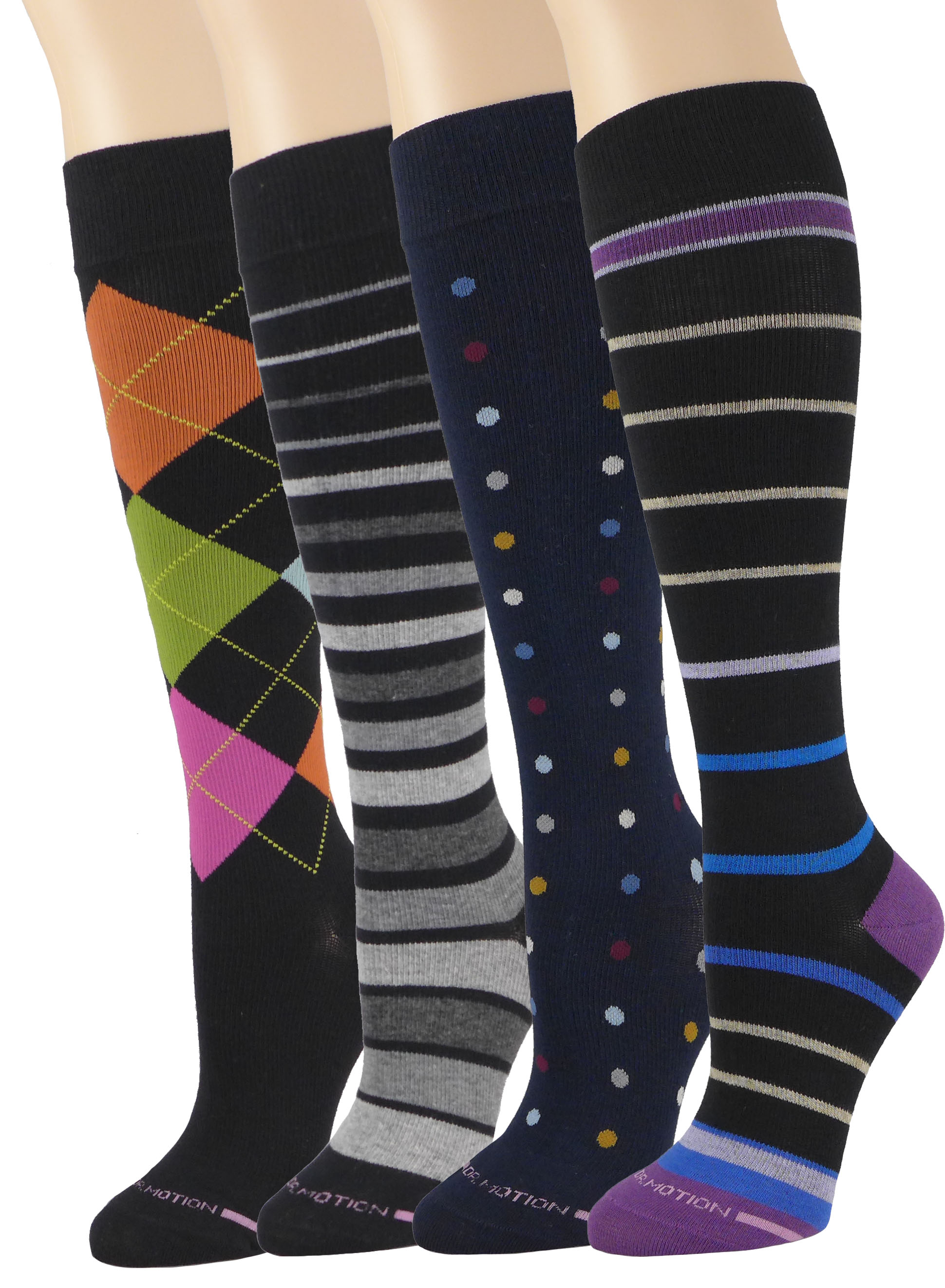
Ankle and calf measurements should be taken first thing in the morning, as your legs will swell the longer you are upright (this happens to healthy people too). Medical grade compression stockings usually measure your ankle circumference, your calf circumference and the distance between your heel and knee. In our experience, the cheaper drug store stockings don’t have great compression and they don’t last very long. If not, you can get them online, but you may want to call a local medical supply store to get a proper fitting for your first pair, and anytime you lose or gain significant weight. If they do, they may require you to use certain medical supply companies to order them. Contact your insurance company to see if they cover medical compression stockings with a prescription from your doctor. Stockings range in price from $20 at the drug store to $150 for high-end prescription stockings. Sometimes latex is used in the elastic bands at the top of the stockings. Most brands are latex free, but if you have a latex allergy, be sure to ask before you buy the stockings. Opaque stockings tend to breath better too.


Opaque stockings tend to be softer and have a more cottony feel to them. Sheer stockings may also tear faster than the thicker opaque stockings. Sheer stockings may be a better option for women who require formal attire for work or when you’re headed out to a party in a fancy dress, but they tend to be scratchier than the more opaque stockings. Open-toe stockings are also a little easier to get on and off. Open toes are good for summer flip flops, peep toe heels and may be more comfortable for people with sensory neuropathy in their feet. Some brands of waist-high medical compression stockings come with open or closed toes. Some compression is better than none if your doctor has recommended compression stockings. If you find waist-high stockings uncomfortable, there’s no reason not to try the thigh-highs or knee-highs, but they won’t be as effective as the waist-highs. Waist-high stockings will help prevent the blood pooling in your abdominal area. Medical compression stockings are super tight and unless you are very thin, the thigh-highs will probably create a not-so-glamorous thigh bulge above the top of the stocking. If you wear knee-high stockings and have blood pooling in your thigh area, you may notice a swelling at your knee, above the top of the knee-high. Most dysautonomia experts recommend waist-high stockings because blood pooling in dysautonomia patients can occur in the entire lower half of the body, including thighs and the abdominal area. However, it’s more important that you find something comfortable that you are willing to wear everyday, that improves your symptoms.

Lower levels of compression or stockings that aren’t waist high will give you less benefit. Most dysautonomia experts recommend 20-30mmHg or 30-40mmHg waist-high stockings. Everyone is different, so there is no guarantee they will help you, but if your doctor has recommended compression stockings, it’s definitely worth it to try them out. They may also give you more endurance to tolerate longer amounts of upright activity before your dysautonomia symptoms set in.

Medical compression stockings can help prevent or minimize dysautonomia symptoms such as lightheadedness, fainting, low blood pressure, tachycardia, fatigue, “brain fog” and muscle pain caused by blood pooling in the legs. We’ve put together a quick reference guide to answer common questions dysautonomia patients have about medical compression stockings. Many doctors advise their dysautonomia patients to try medical compression stockings, but busy doctors often don’t have the time to explain how to get the stockings, where to get them, and how they can help.


 0 kommentar(er)
0 kommentar(er)
